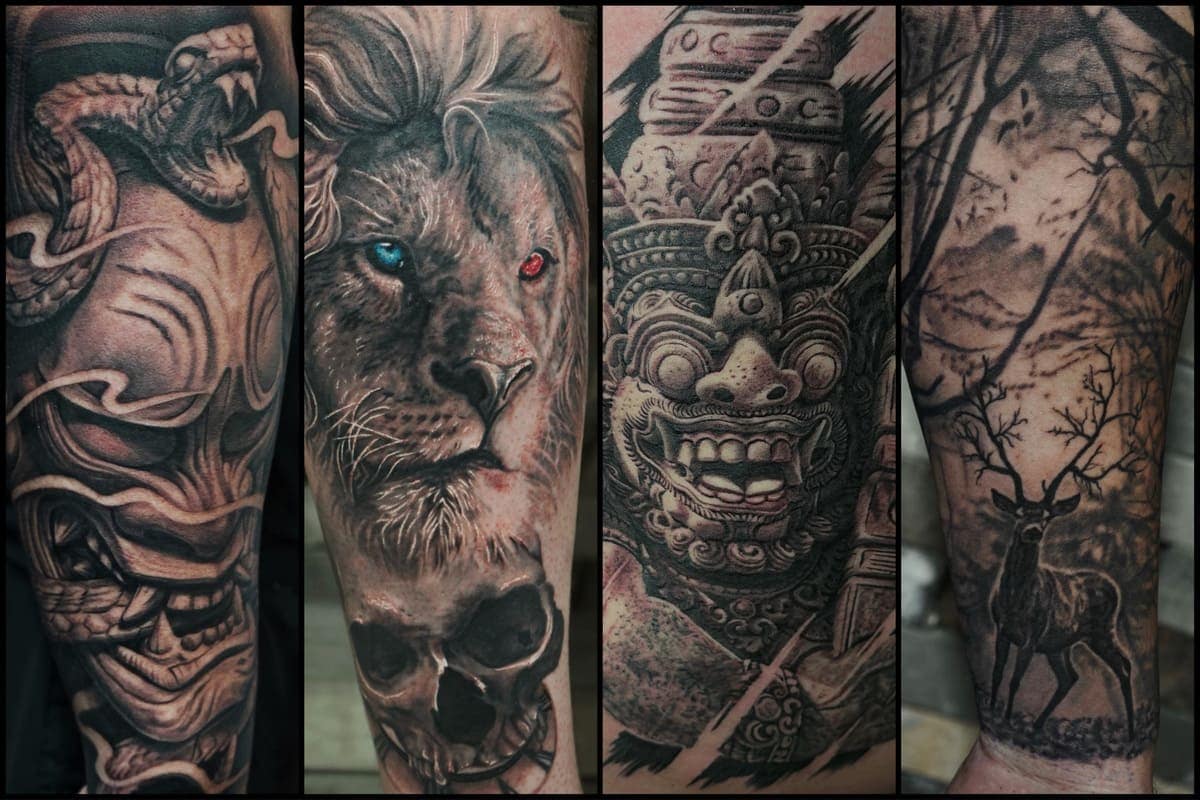Have you ever wondered why many people get tattoos or what tattoo symbolism means? Even if you haven’t got a tattoo, chances are you’ve seen somebody with one. And by the way, about 40 percent of Americans have at least one tattoo!
In the United States alone, this comes out to 70 million people with tattoos! People, including females, are very fond of having tattoos, it’s a cross-gender, cross-age, and cross-social status trend that finds fans everywhere, so it’s no wonder we want to know what they mean and why people choose the symbols they do.
The Origins of Tattoos
Tattoos are not new. They have been used for many years. The earliest evidence of clay figurines that had their faces painted dates back to 5000 BCE or older.
The origins of tattoos are found in many cultures, including:
Ötzi the Iceman
The oldest human tattoo, found on Ötzi the Iceman’s body, dates back to around 3300 BCE.
Ötzi’s tattoos were likely made with charcoal and ashes from a fire and were on his left wrist.
Ancient Egypt
In ancient times, tattoos were used as punishment. High society members also considered tattoos a sign of beauty. Most Egyptians, however, still frowned upon them.
Polynesian culture
Polynesians have used tattoos for hundreds of years as a tradition passed down from generation to generation. They are often used as symbols to represent strength or bravery in battle or religious beliefs.
Japanese culture
The Japanese word irezumi translates directly into English as “insertion of ink,” which describes the process of inserting ink into the skin. There are several different styles of irezumi tattoos throughout Japan, but all follow similar patterns: bold colors, simple designs, and large areas covered with ink at one time (also known as full-body suits).
The Cultural Significance of Tattoos
Tattoos as a Rite of Passage
In many cultures, tattoos were viewed as a rite of passage for young men and women. In Polynesian culture, for example, tattoos were used to mark adulthood and signify sexual maturity. In ancient Egypt, young men were tattooed on their arms and chest with hieroglyphic script which would stand as a reminder of their time spent in school learning how to read and write hieroglyphics.
Tattoos as a Symbol of Social Status
In some societies, tattoos have been used to signify social status. For example, in Scotland, it was customary for high-ranking members of society, like kings or lords, to wear tattoos on their faces or hands so that everyone could see that they belonged to the upper class.
Tattooing as Punishment
In ancient times, tattooing was used as a punishment by many societies around the world. In fact, the word “tattoo” is derived from the Tahitian word “tatu” which means mark or scarification (the practice of making permanent marks on your body). The Maori people were known for their beautiful tattoos, which they applied during ceremonies that marked important events in their lives, like birthdays or marriage rituals. These tattoos would tell stories about their history, culture, and beliefs.
The Personal Stories Behind Tattoos
In the vast realm of body art, tattoos hold a special place as unique expressions of personal stories and beliefs. From the deep scars of historical events to the empowering mantras of self-discovery, tattoos encapsulate narratives that transcend mere ink on skin.
Seventy-Five Years of Partition: Inked Reminders of British India’s Conflict
For some individuals who experienced the partition of British India seventy-five years ago, tattoos became powerful symbols of survival. Elderly survivors witness the conflict through these symbolic and religious markings that once served as a lifeline. Each stroke etched into their flesh tells a story of resilience, a testament to the indomitable human spirit in the face of adversity.
Haji Mohamed Dawjee: ‘Kill Your Darlings’ – A Tattooed Lesson in Moving Forward
Haji Mohamed Dawjee, at the age of thirty, carries a poignant message on her left shoulder. Her tattoo reads, ‘Kill your darlings,’ a mantra reminding her to let go of cherished things to embrace new and better possibilities. Dawjee believes that true growth comes from relinquishing entitlement and staying grounded, whether it be in matters of love, career, or anything that may cloud one’s judgment.
Sue-Ann Cooper: Tattoos as Empowerment – Unveiling the Beauty Within
Sue-Ann Cooper, a forty-three-year-old working for a corporate giant in Randburg, defies stereotypes as a career woman with tattoos. Overcoming self-esteem issues, she discovered her unique beauty and confidence through the artistry adorning her skin. The vibrant colors and designs transform her self-perception, inspiring her to embrace her greatness. Although her workplace allows her to cover them when necessary, Cooper takes every opportunity to proudly display her tattoos, defying societal expectations.
Conclusion
In every tattoo lies a personal story, a chapter eternally inscribed on the canvas of one’s body. These stories are as diverse as the individuals who bear them. From tales of survival to messages of self-discovery, tattoos offer a medium for individuals to share their narratives with the world, celebrating the rich tapestry of human experiences.
